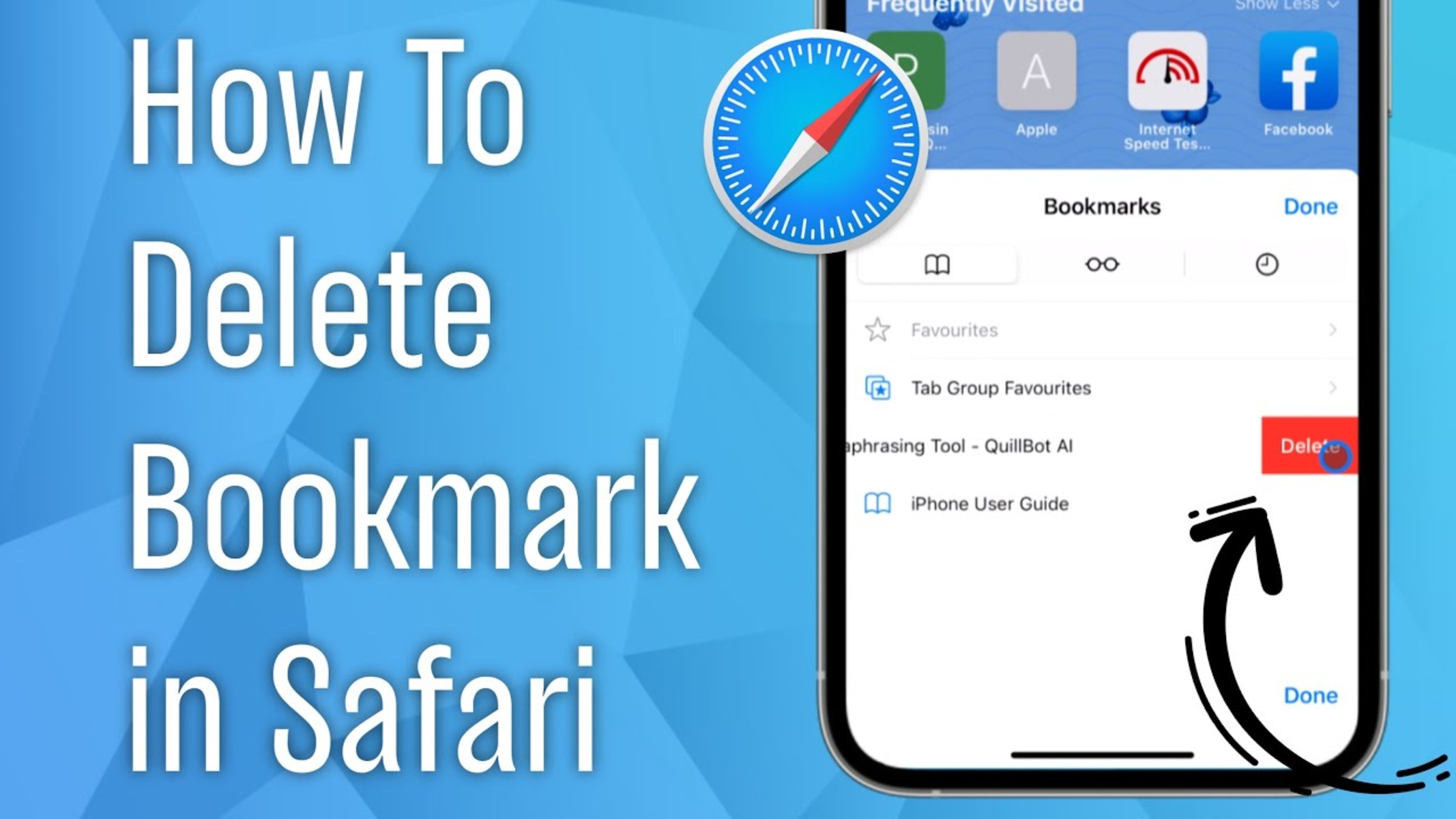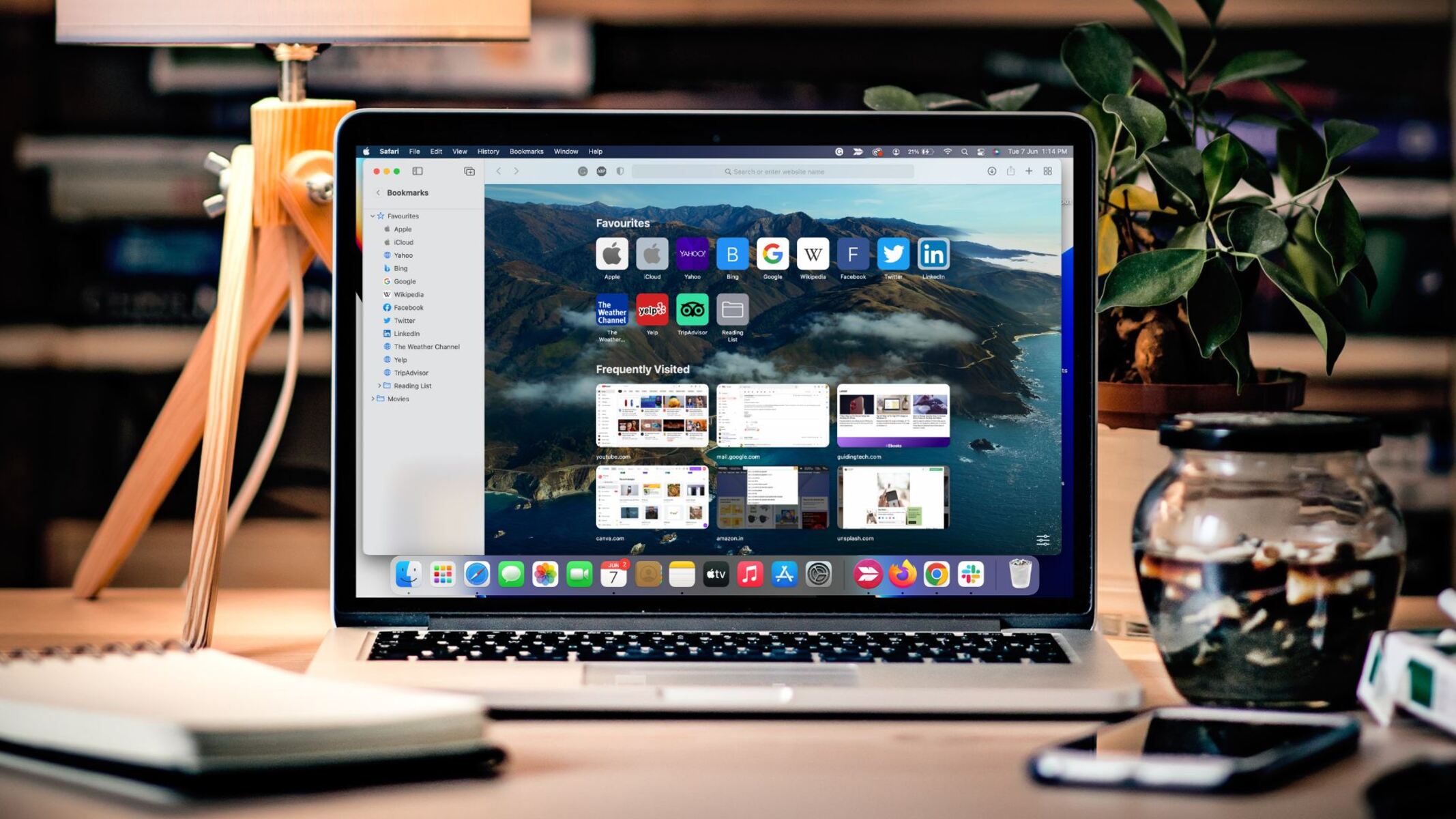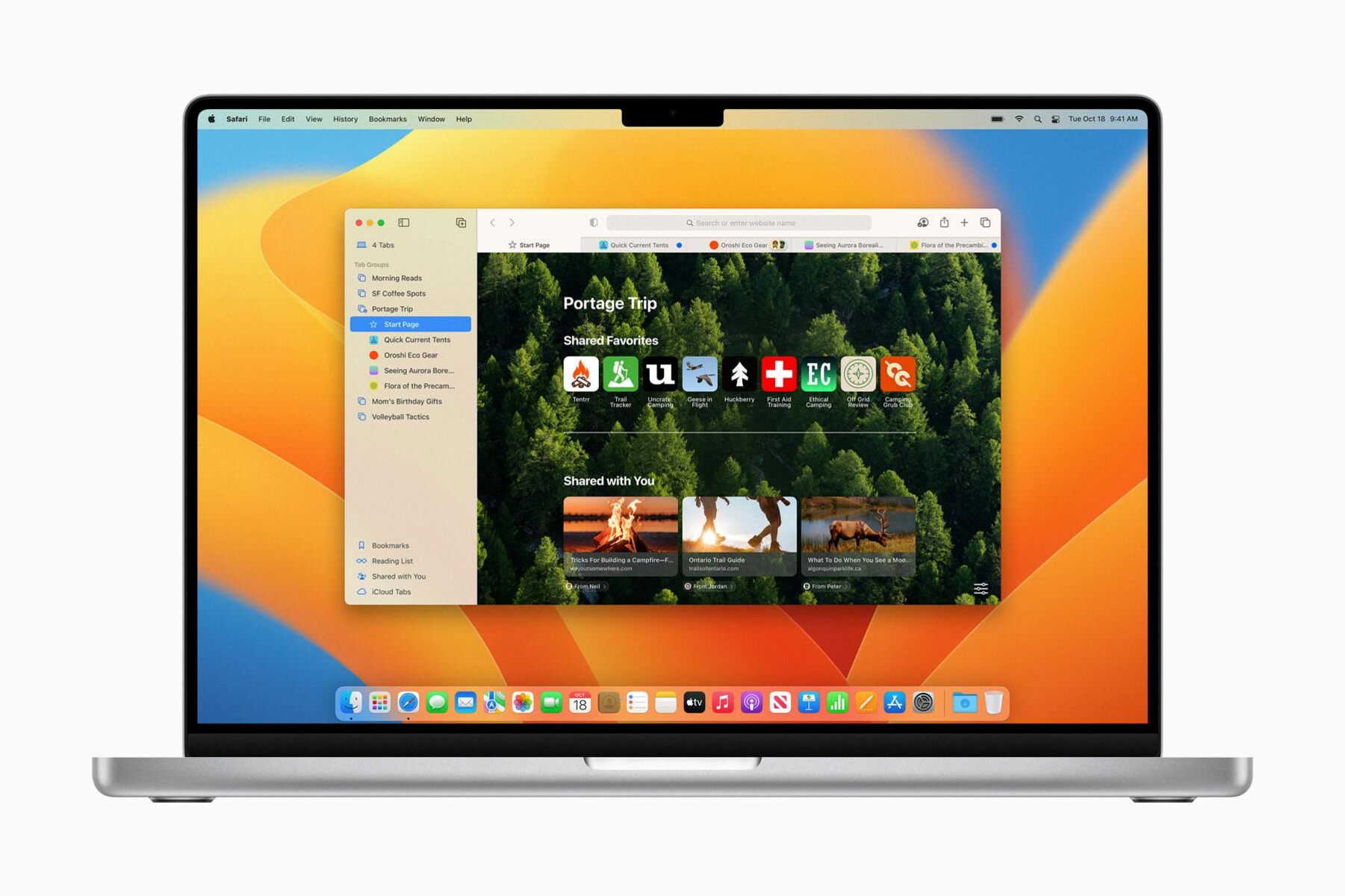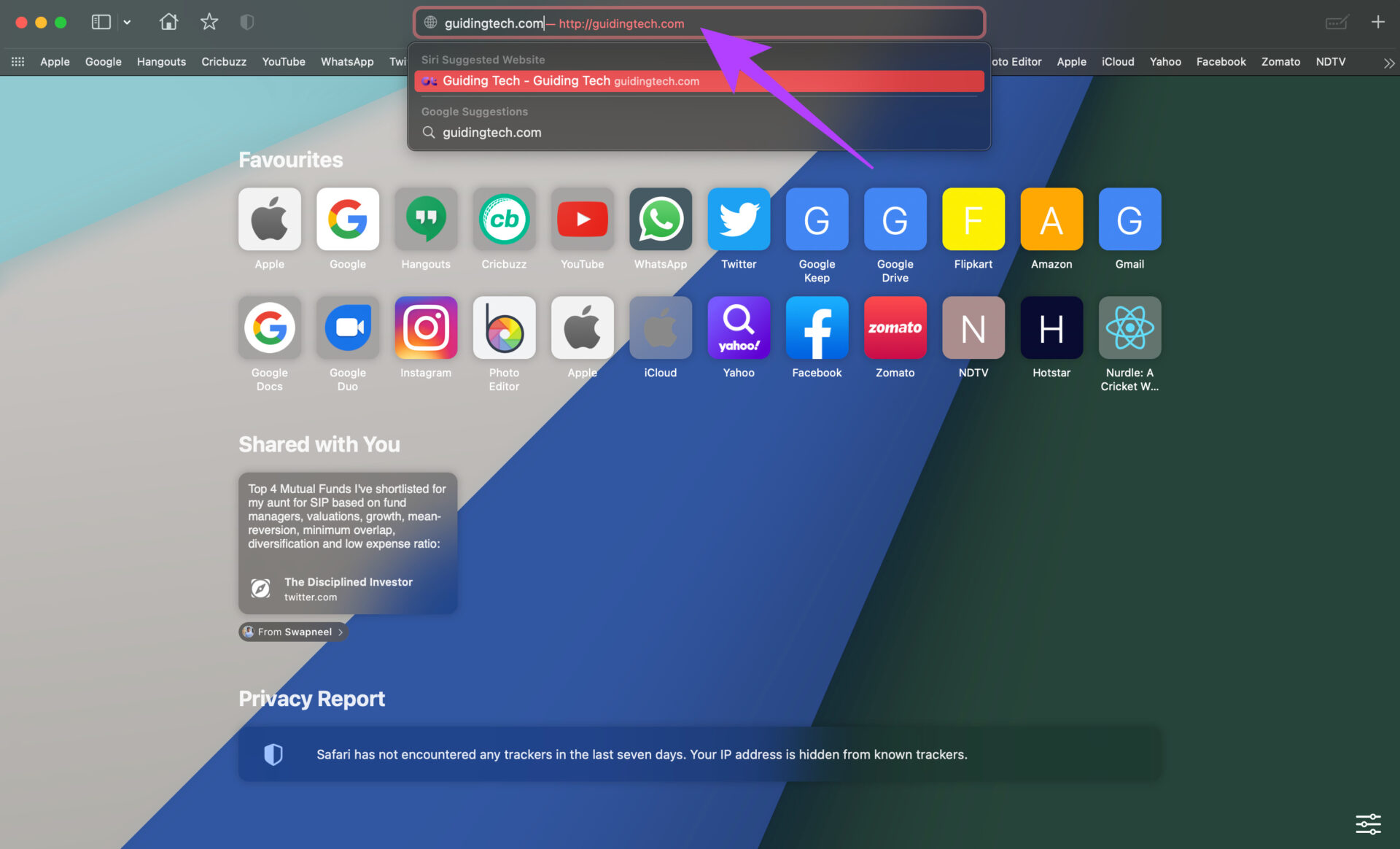Introduction
Safari, Apple's native web browser, is renowned for its sleek interface, robust performance, and seamless integration with the Apple ecosystem. One of its key features is the ability to bookmark webpages, allowing users to save and access their favorite sites with ease. Whether it's a recipe you want to revisit, an article you'd like to read later, or a shopping page you frequently visit, Safari's bookmarking functionality provides a convenient way to organize and revisit online content.
In this guide, we will explore the step-by-step process of bookmarking a page on Safari. By following these simple instructions, you can effortlessly save webpages for future reference, streamlining your browsing experience and ensuring that your go-to sites are just a tap away. Whether you're using Safari on your iPhone, iPad, or Mac, the process of bookmarking a page remains consistent, making it a user-friendly feature across all Apple devices.
So, whether you're a seasoned Safari user or a newcomer to the browser, mastering the art of bookmarking pages will undoubtedly enhance your browsing efficiency. Let's delve into the seamless process of bookmarking a page on Safari and unlock the full potential of this versatile web browser.
Step 1: Open Safari and navigate to the desired webpage
To begin the process of bookmarking a page on Safari, the first step is to launch the Safari browser on your Apple device. Whether you're using an iPhone, iPad, or Mac, the Safari icon is easily recognizable, featuring a compass-like design. Upon tapping the Safari icon, the browser will open, presenting you with a clean and intuitive interface, ready to embark on your browsing journey.
Once Safari is open, the next step is to navigate to the webpage that you wish to bookmark. This can be achieved by tapping the address bar at the top of the screen and entering the URL of the desired webpage. Alternatively, if you have previously visited the webpage and it appears in your browsing history, you can access it by tapping the bookmarks icon and selecting the page from your history or bookmarks list.
Whether you're visiting a news article, a recipe, a blog post, or any other webpage that captures your interest, Safari's smooth navigation capabilities ensure that you can swiftly reach your desired destination. As the webpage loads, take a moment to explore its content and ensure that it is indeed the page you intend to bookmark. Once you've confirmed that you're on the right webpage, you're ready to proceed to the next step in the bookmarking process.
Navigating to the desired webpage is the foundational step in the process of bookmarking a page on Safari. By seamlessly opening the browser and reaching the specific webpage you wish to save for future access, you set the stage for the subsequent steps that will culminate in the successful bookmarking of the page. With Safari's user-friendly interface and efficient browsing capabilities, this initial step is a seamless and intuitive beginning to the bookmarking process, paving the way for a streamlined and personalized browsing experience.
Step 2: Tap the share button at the bottom of the screen
After successfully navigating to the desired webpage, the next pivotal step in the process of bookmarking a page on Safari is to tap the share button, strategically positioned at the bottom of the screen. This unassuming yet powerful icon, denoted by a square containing an arrow pointing upwards, serves as the gateway to a myriad of actions, including the essential function of bookmarking a webpage.
Located at the bottom of the Safari interface, the share button embodies the ethos of seamless connectivity and user empowerment, offering a convenient means to interact with web content. Upon tapping this button, a menu of options gracefully unfurls, presenting a versatile array of actions that enable users to engage with the webpage in various ways.
When the share button is tapped, it triggers a visually appealing animation, signaling the initiation of a transformative moment in the browsing experience. As the menu emerges, it exudes a sense of possibility, inviting users to explore the diverse set of actions at their disposal. From sharing the page with friends, to saving it to a reading list, to printing or copying the URL, the share menu encapsulates the essence of digital empowerment, placing an array of functionalities within easy reach.
The share button's strategic placement at the bottom of the screen reflects Apple's commitment to intuitive design and user-centric functionality. By positioning this pivotal feature within close proximity to the user's fingertips, Safari empowers users to seamlessly interact with web content, fostering a sense of agency and control over their browsing experience.
In the context of bookmarking a page, tapping the share button serves as the catalyst for the subsequent steps that culminate in the preservation of the webpage for future access. This pivotal action initiates a chain of events that propels the user towards the fulfillment of their intent, seamlessly bridging the gap between browsing and personalized content management.
In essence, tapping the share button at the bottom of the screen represents a pivotal juncture in the bookmarking process, embodying the spirit of user empowerment and seamless interaction with web content. This simple yet transformative action sets the stage for the next steps in the bookmarking journey, propelling users towards the seamless preservation of their favorite webpages within Safari's intuitive ecosystem.
Step 3: Select "Add Bookmark" from the options
Having tapped the share button and unveiled a menu of possibilities, the next pivotal action in the process of bookmarking a page on Safari is to select "Add Bookmark" from the array of options presented. This crucial step marks the transition from mere browsing to intentional curation, as users assert their desire to preserve the webpage for future access.
Amidst the array of options that grace the share menu, the "Add Bookmark" function stands as a beacon of personalized content management, offering users the ability to imbue their browsing experience with a sense of purpose and organization. By selecting this option, users signal their intent to elevate the webpage from a transient digital encounter to a cherished entry within their personal collection of bookmarks.
The act of choosing "Add Bookmark" from the menu is a deliberate and empowering gesture, encapsulating the essence of user agency and digital autonomy. As users tap this option, they embark on a transformative journey, transcending the ephemeral nature of web browsing and embracing the enduring value of curated content.
In essence, the selection of "Add Bookmark" from the options represents a pivotal moment of intentionality and personalization within the browsing experience. It signifies the user's recognition of the webpage's significance and their desire to integrate it into their digital repertoire, ensuring that it remains readily accessible amidst the vast expanse of online content.
As users navigate through the share menu and choose the "Add Bookmark" option, they embark on a journey of digital curation, infusing their browsing experience with a sense of purpose and continuity. This deliberate action serves as a testament to the user's discerning eye for valuable content, as they bestow upon the webpage the distinction of being a cherished bookmark within their Safari ecosystem.
By selecting "Add Bookmark" from the options, users not only preserve the webpage for future access but also imbue it with a sense of significance within their personalized browsing landscape. This intentional act of curation elevates the webpage from a fleeting encounter to a timeless entry within the user's digital library, ensuring that it remains a steadfast companion in their online explorations.
Step 4: Choose a folder to save the bookmark in
Upon selecting "Add Bookmark" from the options, Safari presents users with the pivotal task of choosing a folder in which to save the bookmark. This decisive step embodies the essence of personalized organization, empowering users to categorize their bookmarks according to their preferences and browsing habits.
As the folder selection interface gracefully unfolds, users are greeted with a visually appealing array of folders, each representing a distinct category or theme. From "Favorites" to "Reading List" to custom folders created by the user, the options abound, offering a versatile canvas upon which users can paint the tapestry of their digital curation.
The act of choosing a folder to save the bookmark in is a testament to the user's penchant for personalized organization and seamless access to their curated content. Whether it's a folder dedicated to recipes, travel inspiration, or professional resources, users are invited to imbue their browsing experience with a sense of purpose and structure, ensuring that their bookmarks are thoughtfully arranged for effortless retrieval.
In the context of digital curation, the folder selection process represents a transformative moment, as users bestow upon their bookmark a sense of belonging within their personalized ecosystem. By carefully choosing the most fitting folder, users infuse their browsing experience with a touch of individuality, ensuring that their curated content reflects their unique interests and preferences.
The folder selection interface serves as a canvas for users to craft a narrative of their digital explorations, encapsulating their diverse interests and pursuits within a harmonious framework. Whether it's a folder dedicated to hobbies, research topics, or leisure pursuits, the act of choosing a folder to save the bookmark in represents a deliberate gesture of personalization and intentionality.
In essence, the process of choosing a folder to save the bookmark in transcends mere organization; it embodies the user's desire to infuse their browsing experience with a sense of purpose and coherence. By carefully selecting the most fitting folder, users not only streamline their access to curated content but also imbue their digital landscape with a sense of individuality and intentionality.
Step 5: Edit the bookmark name and URL if desired
Once you have chosen the folder to save your bookmark in, Safari empowers you with the flexibility to customize the bookmark's name and URL, allowing you to tailor the entry to your preferences and organizational style. This pivotal step in the bookmarking process embodies the ethos of personalized content management, enabling you to imbue your curated collection with a touch of individuality and coherence.
As you embark on the process of editing the bookmark name and URL, Safari presents you with a seamless interface that invites you to infuse the entry with a sense of context and relevance. Whether you wish to refine the bookmark's name to succinctly encapsulate its content or modify the URL to include additional details, Safari's intuitive editing capabilities place the power of customization at your fingertips.
The act of editing the bookmark name and URL represents a transformative moment in the bookmarking journey, as you assert your agency in shaping the narrative of your digital curation. By customizing the bookmark's name, you bestow upon it a sense of clarity and distinction, ensuring that it resonates with your browsing preferences and resonates with your browsing preferences and organizational style.
In the context of the URL, the ability to modify this crucial component empowers you to infuse the bookmark with additional context or descriptors, enhancing its informational value and facilitating effortless retrieval in the future. Whether you choose to append keywords, dates, or brief descriptions to the URL, this customization capability enables you to enrich the bookmark with valuable metadata, elevating it from a mere entry to a meticulously crafted reference point within your curated collection.
In essence, the process of editing the bookmark name and URL embodies the spirit of user empowerment and personalized content management. By leveraging Safari's intuitive editing interface, you not only tailor the bookmark to your browsing preferences but also imbue it with a sense of context and relevance, ensuring that it seamlessly integrates into your curated landscape of digital content.
As you meticulously refine the bookmark's name and URL, you infuse it with a touch of individuality and coherence, ensuring that it aligns harmoniously with your browsing habits and organizational style. This deliberate act of customization elevates the bookmark from a generic entry to a personalized reference point, enriching your browsing experience with a sense of purpose and intentionality.
Step 6: Tap "Save" to bookmark the page
As the culmination of the intricate process of bookmarking a page on Safari, the final step entails tapping the "Save" button, an action that solidifies the preservation of the webpage within your curated collection of bookmarks. This seemingly simple yet profoundly impactful gesture serves as the definitive seal of approval, affirming your intent to immortalize the webpage as a cherished entry within Safari's ecosystem.
Upon tapping the "Save" button, Safari orchestrates a seamless transition, gracefully integrating the bookmarked page into your personalized collection with a sense of finality and assurance. This pivotal action not only signifies the completion of the bookmarking process but also symbolizes the inception of a lasting connection between you and the curated webpage, ensuring that it remains readily accessible amidst the vast expanse of online content.
The act of tapping "Save" to bookmark the page embodies the essence of intentionality and personalization, as you bestow upon the webpage the distinction of being a cherished entry within your digital library. This deliberate gesture transcends mere preservation; it signifies your recognition of the webpage's value and your desire to integrate it into your browsing repertoire, ensuring that it remains a steadfast companion in your online explorations.
In essence, tapping "Save" represents a transformative moment, as you imbue the bookmarked page with a sense of significance and permanence within your curated landscape. This simple yet profound action serves as a testament to your discerning eye for valuable content, as you elevate the webpage from a transient encounter to a timeless reference point, enriching your browsing experience with a touch of individuality and purpose.
As the "Save" button is tapped, Safari seamlessly assimilates the bookmarked page into your curated collection, ensuring that it is poised to accompany you on your digital journey, ready to be revisited and rediscovered at your convenience. This definitive act of preservation not only streamlines your access to curated content but also enriches your browsing landscape with a sense of continuity and personalization, ensuring that your go-to sites are just a tap away whenever inspiration strikes.
By tapping "Save" to bookmark the page, you not only affirm your intent to preserve the webpage but also infuse it with a sense of belonging within your personalized browsing ecosystem. This final act of bookmarking represents the culmination of a purposeful journey, as you seamlessly integrate the webpage into your digital repertoire, ensuring that it remains a steadfast companion amidst the ever-evolving tapestry of online content.
Conclusion
In conclusion, the process of bookmarking a page on Safari transcends mere digital preservation; it embodies the essence of personalized content management, user empowerment, and seamless integration within the Safari ecosystem. From the initial step of navigating to the desired webpage to the final act of tapping "Save" to immortalize the page within your curated collection, each stage of the bookmarking journey represents a transformative moment, infusing your browsing experience with a touch of individuality and purpose.
As users navigate through the seamless interface of Safari, tapping the share button, selecting "Add Bookmark," and customizing the entry with a chosen folder and personalized name and URL, they embark on a journey of digital curation, shaping their browsing landscape with intentionality and coherence. The deliberate gestures of choosing a folder, editing the bookmark details, and ultimately saving the page signify the user's discerning eye for valuable content, elevating the webpage from a transient encounter to a timeless reference point within their digital library.
The act of bookmarking a page on Safari is not merely a functional task; it is a testament to the user's desire to imbue their browsing experience with a sense of purpose and continuity. By seamlessly integrating their curated collection of bookmarks into Safari's ecosystem, users ensure that their go-to sites are just a tap away, ready to be revisited and rediscovered at their convenience.
Furthermore, the process of bookmarking a page on Safari reflects Apple's commitment to intuitive design and user-centric functionality. The seamless interface, visually appealing animations, and versatile array of options within the share menu embody the ethos of digital empowerment, placing a myriad of functionalities within easy reach and inviting users to interact with web content in meaningful ways.
In essence, the art of bookmarking a page on Safari is a testament to the seamless integration of user agency, personalized organization, and digital autonomy within the browsing experience. By mastering the art of bookmarking, users unlock the full potential of Safari, transforming their browsing journey into a curated exploration of their unique interests and preferences. Whether it's a recipe, an article, a blog post, or any other webpage that captures their interest, Safari's bookmarking functionality ensures that users can effortlessly save and access their favorite sites, enriching their browsing experience with a touch of individuality and purpose.

























